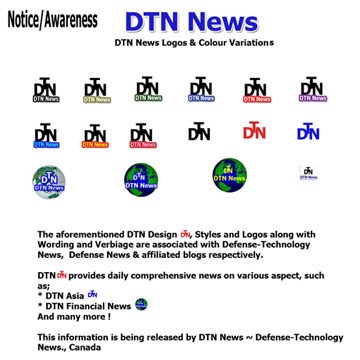(NSI News Source Info) UNITED NATIONS - May 20, 2010: The United States, and most of the Western world, have transformed Iranian President Mahmoud Ahmadinejad into a virtual bogeyman, thereby spreading fear throughout  the neighbouring countries of the Gulf Cooperation Council (GCC): Bahrain, Kuwait, Qatar, Oman, Saudi Arabia and the United Arab Emirates (UAE).
the neighbouring countries of the Gulf Cooperation Council (GCC): Bahrain, Kuwait, Qatar, Oman, Saudi Arabia and the United Arab Emirates (UAE).
 the neighbouring countries of the Gulf Cooperation Council (GCC): Bahrain, Kuwait, Qatar, Oman, Saudi Arabia and the United Arab Emirates (UAE).
the neighbouring countries of the Gulf Cooperation Council (GCC): Bahrain, Kuwait, Qatar, Oman, Saudi Arabia and the United Arab Emirates (UAE).A nuclear-powered Iran, so the argument goes, is a danger to all of these mostly affluent Arab countries, plus nuclear-armed Israel. But either directly or indirectly, the Iranian threat also has a hidden agenda because it is being implicitly viewed as good for business: the lucrative arms business.
The Western world is unloading some of its most sophisticated weapons - including state-of-the-art fighter planes and anti-missile defence systems - in the Gulf region, clinching multi-billion-dollar arms deals.
According to an analysis by Forecast International Inc. (FI), a leading U.S. defence market research firm, the GCC countries will account for about 60 percent of all defence spending in the region in 2010. The prediction is that all six Gulf countries will invest over 63 billion dollars toward their armed forces and security this year, with two-thirds of the total coming from Saudi Arabia.
"The GCC members continue to cast a wary eye across the Gulf at Iran," says Dan Darling, FI's military markets analyst for Europe and the Middle East. Under the perception that Iranian hegemonic ambitions constitute their principal and most immediate strategic threat, these countries have been focusing on air, missile defence and naval equipment, he added.
"The result of these ambitions has been an annual level of defence spending by GCC members that is disproportionate to the relatively small size of their militaries," Darling told IPS. At a summit meeting of three heads of state last week, Ahmadinejad struck a deal with Brazilian President Luiz Inacio Lula da Silva and Turkish Prime Minister Recep Tayyip Erdogan to ship roughly half of Iran's nuclear fuel to Turkey, thereby declaring his country's intentions not to develop nuclear weapons.
Although the deal was expected to undermine U.S. plans to move a fourth Security Council resolution imposing sanctions on Iran, the administration of President Barack Obama said Tuesday it will go ahead with the resolution, apparently with the backing of Russia and China. If the resolution is adopted by the Security Council later next month, it will further strengthen the Western argument that Iran is on the verge of going nuclear, reinforcing existing fears in the Middle East.
Pieter Wezeman, a researcher with the Arms Transfer Programme of the Stockholm International Peace Research Institute (SIPRI), told IPS that perceptions of Iran's intents and capabilities are certainly a major reason for the high military sales to several of the largest arms importers in the Middle East: Israel, the UAE and Saudi Arabia.
"Israel perceives Iran as a major, if not the most important, current threat to its existence and many of its arms procurements are driven by this perception," he said.
In particular, Wezeman said, the Israeli procurement of 102 F-16I combat aircraft with long-range strike capabilities and related advanced weapons, all from the United States, have improved Israel's capacity to hit targets at long distances, including in Iran. However, other concerns also drive Israeli arms procurement, in particular its conflicts with Hamas, Hezbollah and Syria, and to a lesser extent worries about potential future developments in Egypt and Saudi Arabia. Similarly, in Saudi Arabia there is a strong suspicion towards Iran, and this is undoubtedly an important factor driving its latest series of major arms procurements, such as an order for 72 Typhoon combat aircraft from the UK, said Wezeman. Internal tensions in relation to conflict in Iraq and Yemen may also explain some of Saudi Arabia's major arms procurements, such as an order for 724 Piranha armoured vehicles from Canada.
"Finally, for the UAE, internal tensions cannot explain its position as the fourth largest (arms) importer in recent years, and its arms procurement seem to be primarily related to assumptions about Iran," he said.
However, considering the many prestige projects in the UAE, such as the Burj Khalifa, the prestige factor may also play a role in UAE arms procurement, he added. Darling of Forecast International told IPS, "The splurge in Middle East arms purchases over the past half-decade has certainly been fueled by fears of Iran, but also by other factors, including significant energy revenues and internal security worries."
For instance, concern over the protection of energy pipelines and other vital infrastructure from terrorist attacks has fueled investment by the Gulf countries in internal security forces and surveillance assets – such as Saudi Arabia's multi-billion-dollar border surveillance system. Meanwhile, the United States has aimed to create a strategic bulwark against the potential threat of Iran, evidenced by the previous administration's introduction in 2007 of a 20-billion-dollar package of government-to-government Foreign Military Sales (FMS) proposals intended for the Gulf Arab states.
It should not be forgotten that arms sales in the Middle East have also risen in the past few years due to the complete rebuilding of the Iraqi Security Forces (ISF) from scratch, Darling noted. During a visit to Saudi Arabia in March, U.S. Defence Secretary Robert Gates pledged to help most of the Gulf countries shore up their defences against their potentially nuclear-armed neighbour, Iran.
The United States also deployed special warships off the coast of Iran with anti-missile systems in at least four Arab countries: Bahrain, Kuwait, Qatar and the UAE. Wezeman of SIPRI told IPS that decision makers in countries in the region and in the arms supplying countries will have to consider carefully how a large flow of conventional arms will actually provide protection against any presumed aggressive intentions by Iran.
They will have to consider how their high levels of armament, combined with the major presence of U.S. military in the region, are needed to deter Iran, and to which extent further arms procurement may fuel Iranian fears about the intentions of its neighbours, he pointed out.
This in turn, Wezeman said, could fuel an Iranian assessment that its conventional arsenal is inadequate to defend against overwhelming conventional forces of potential opponents.
*This article is being posted from Toronto, Canada By DTN News ~ Defense-Technology News, contact: dtnnews@ymail.com
Disclaimer statement
Whilst every effort has been made to ensure the accuracy of the information supplied herein, DTN News ~ Defense-Technology News cannot be held responsible for any errors or omissions. Unless otherwise indicated, opinions expressed herein are those of the author of the page and do not necessarily represent the corporate views of DTN News ~ Defense-Technology News.







No comments:
Post a Comment